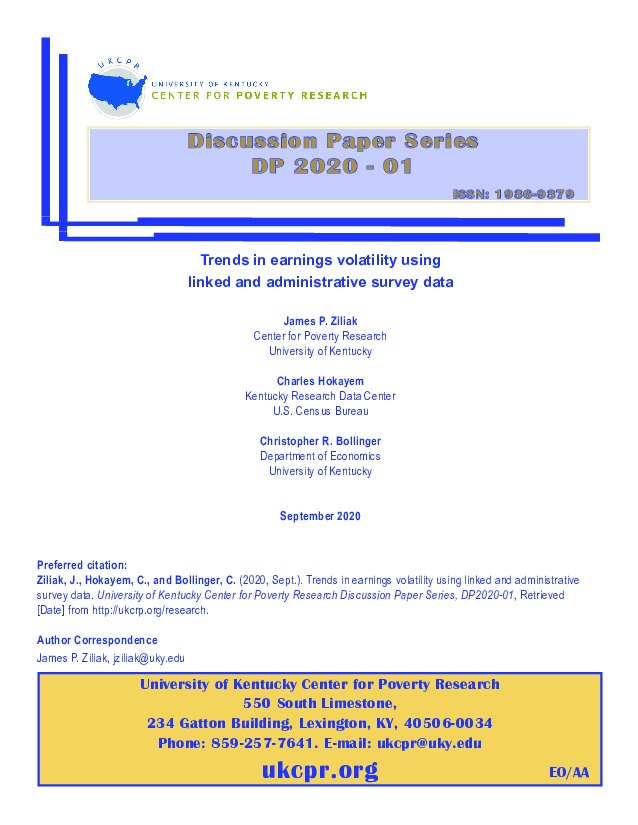We document trends in earnings volatility separately by gender in combination with other characteristics such as race, educational attainment, and employment status using unique linked survey and administrative data for the tax years spanning 1995-2015. We also decompose the variance of trend volatility into within- and between-group contributions, as well as transitory and permanent shocks. Our results for continuously working men suggest that trend earnings volatility was stable over our period in both survey and tax data, though with a substantial countercyclical business-cycle component. Trend earnings volatility among women declined over the period in both survey and administrative data, but unlike for men, there was no change over the Great Recession. The variance decompositions indicate that nonresponders, low-educated, racial minorities, and part-year workers have the greatest group specific earnings volatility, but with the exception of part-year workers, they contribute least to the level and trend of volatility owing to their small share of the population. There is evidence of stable transitory volatility, but rising permanent volatility over the past two decades in male and female earnings.
Research
InequalityPDF Thumbnail
